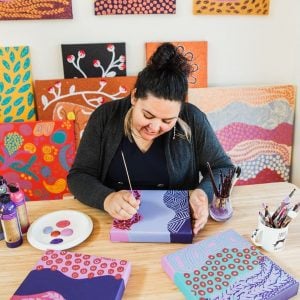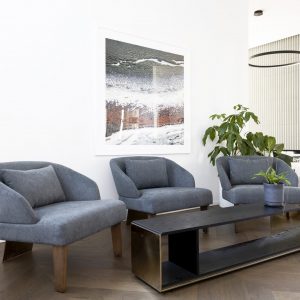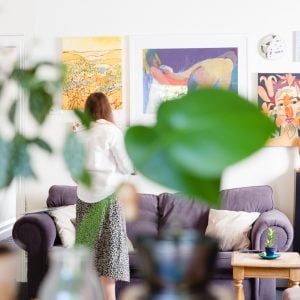5 Steps to Start Collecting Contemporary Art
The desire to collect beautiful objects is uniquely human. Our belongings are an extension of our identity, and live on after we are gone. Building an art collection can be a monetary investment, but more often than not there is an emotional pull that draws us to the art we like. Love.
Here are 5 steps derived from the chapters of our ebook ‘Becoming an Art Collector’ which will help point your future collection in the right direction.
Step One: Collect art for the right reasons.
Contemporary art is art that is being created now, in your lifetime. Collect it to invest financially in yourself and your family. Buy art to support an industry that you love. Collect it to be a part of history. Record the present moment for posterity through beauty you identify with. Collect it to tell your story. Buy art because it brings you happiness, because you find a calm, beautiful place by simply staring at it. Collect art to fall in love over and over again.

Nervy by Jill Bryant. Jill’s free moving brush stroke evoke energy and emotion.
Step Two: Look in the right places.
So where should you start? The most affordable way to collect contemporary art is to buy original art from emerging artists. Collecting art from artists at the beginning of their careers is easy and fun. It can also be the most financially rewarding as the artists mature and their work increases in value. Where do you find anything nowadays? The Internet, of course! It’s the best place to research emerging contemporary artists, and now it’s the best place to buy art, too.
Step Three: Define your taste and do your research.
There are some essential steps to take when choosing what art to buy. First, you need to define your taste and style. According to Alan Bamberger, US author of Buy Art Smart, you should “define, select, research, buy.” This means figuring out what you like and what your style is. It could be as simple as observing what types of images or patterns tend to catch your eye or what colours you are drawn to; or it could mean looking around your home or office to get a feel for the kind of work that will suit your environment.
Step Four: Consider your intention to buy as an investment.
There are two ways to view an art collection as an investment. You can view it as a spiritual investment in knowledge, history, beauty and happiness. Secondly, you can view it as a monetary investment. The former is most important, because you will never build a valuable collection if you don’t love the art you buy.

Burke by Stephen Homewood. Stephen’s style is completely original. Selling every week consistently, he’s one to watch.
Step Five: Become the fabulous Curator you are.
The addition of artworks to your home will change the way it looks and feels. Your collection should display your style and personality. It’s important to buy art that you are drawn to, that speaks to you, and reflects who you are. There are a few ways you can approach this. You can be completely eclectic, buying without regard to consistency and proudly celebrating your mix ’n match approach to style and genre; or you can follow themes or specific mediums. It’s completely up to you.
Do not ignore your personal preference, even if it runs counter to what’s ‘hot’ or on trend at the moment. It is only through collecting what you personally are drawn to that you can express the human experience through your eyes and create a collection that reflects a consistency of feeling even if the style, genre and medium vary wildly. Trust your instincts.










